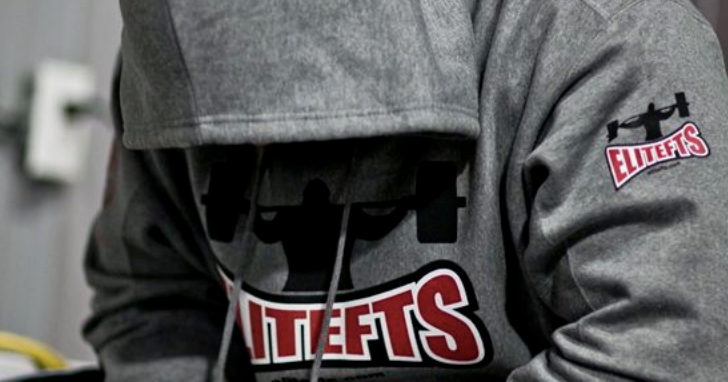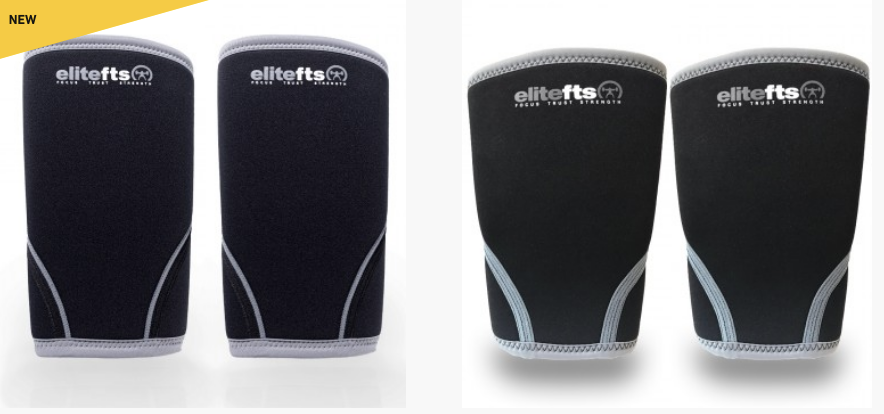
The new year starts with a completely different approach to my leg training. It has to. Though my knee is now to the point where I can start to build strength in my legs again, I have to take precautions to keep it healthy.
Obstacles - physical or mental?
My biggest obstacle for training legs is the loss of articular cartilage. There is no "getting it back." I haven't technically rehabilitated my knee as much as I have allowed enough time for the inflammation of the bones to subside. I will never be able to regenerate the cartilage; it will not grow back. The best I can do at this point is build back into training legs as heavy as my knee will allow, while not irritating it too much and cause inflammation to build over time. I am quite sure that training legs now is causing some mild inflammation. I have to make sure that the inflammation subsides before I train again so that the inflammation doesn't build or overlap from leg session to leg session.
5 things to focus on
My plan to keep the inflammation minimal involves 5 main components:
training as low volume as I can to still induce hypertrophy
not going too heavy too soon
maintaining the correct positioning that doesn't irritate the knee (I have found foot and stance positions that are better than others)
making damn sure that all of my stabilizers and prime movers have balanced strength from the left side to the right side before I start pushing strength upward
be patient
The plan
It sounds complicated but because I have been dealing with this injury for so long, it is quite simple. I know the exercises that put my knee at higher risk, and I avoid them. EG: I cannot do leg extensions. I can get by doing them for one session but two sessions makes the inflammation increase. The cost-to-benefit just isn't there. Instead, I have found the exercises that are going to work well for me and though I lose variety, I don't really care. My focus is simply on hypertrophy with low risk. The lack of variety I couldn't care less about.
Exercise selection
Though the first exercise on my list may not surprise you, it surprised me. I haven't barbell squatted in years because of a history of lower-back issues. Due to this injury, I was forced to revisit them because I need exercises that aren't "fixed." Basically, I need exercises where I have to balance left to right and I can't get that on a leg press, hack squat, or even squatting in a smith machine. When a machine is fixed, my strong side can and probably will take over. This could be a detriment over time because as I increase strength, the imbalance in strength from left to right would remain. There is nothing more dangerous to the lower back than building strength in the lower body that is uneven. Plus, I need the visual balance from left to right, as well. I don't want one leg better developed than the other.
There is no more humbling experience than squatting 10 reps with 135 and getting your ass kicked. However, I doubt I have ever finished a set of squats with 135 and been so happy about it. Keep in mind that just 3 months ago, I could not sit down on a chair or the toilet without favoring my strong leg. Yes, it's only 135 for sets of 10 right now (and my hams, glutes, and quads are so sore that I feel like I need a walker), but I will, no doubt, build on this strength. Hell, a lot of the issue is confidence more than strength. My brain is programmed after 10 months of this knee injury to think that my knee is still weak. I have to reprogram my thinking and prove to my brain that it is now strong enough to handle these weights and more. Slowly increasing the weights over time will do that. For now, my opener for quads will be barbell squats.
The next exercise is another option that I feel will best help me to improve balance from left to right, as well. I am driving 1.5 hours to my favorite gym in Miami to use their leg press that has a split platform. I hold both platforms at the same time (one with my left leg and one with my right leg) and I alternate each rep doing one rep on the right followed by one rep on the left and repeat for the full set. There is no way that the strong leg can help the weak leg, so my weak leg has no choice but to grow. I stop the set only when the weak leg is going to fail. This means the strong leg could still do more reps but I stop the set at that point. Why? The strong side isn't stressed as much so there is little to no growth happening on the strong side. The weak side, however, is getting it's ass kicked. This will bring up the weak side much faster. The cool thing is that the strength imbalance on this exercise is only about 1 rep. This might not mean a lot to you but to me it says I am very close to being balanced from left to right. I will not increase the weight until that balance is even. I anticipate this being only a couple more sessions.
Muscle imbalances
Another way I am gauging the strength imbalance is to measure both legs, and to also compare soreness in both legs. The measurement is only about 1/3 inch off, and I was surprised to find that it was this close. Most people without injuries will have this amount of imbalance in their leg size. So, my main concern is more the strength imbalance that could cause injury to my lower back.
The soreness is a little off from left to right, though, and this is important. My weak quad is not as sore as my strong quad (close but not even). My glute on the weak side gets more sore than the glute on my strong side. What does this say? My right glute is compensating a little bit for the weak quad. This means that it's likely that my hips are slightly turned or rotated differently to compensate for the knee injury. Is this physical or mental? I am not sure at this point, but I feel it is more mental because there is no pain in the knee, anymore. If it is mental, my brain is just concerned that the knee is still weak and wants to protect it. This is one more reason why I am not pushing my strength up too fast. I need all of the muscles working the same on both sides before I start focusing more on pushing strength higher.
I do end my quad training with a fixed machine, usually. My thoughts are that I need to train my brain to drive evenly even if using a machine that is fixed. I might sometimes end with lunges to stay with the unilateral movements, but after bombing the shit out of my legs with the one-legged leg presses, doing one-legged lunges seems a bit redundant; the movements are similar.
I should note that I always start my leg sessions with hamstrings to get as much blood in my legs as possible before switching to quad training. I do this as a precaution for my knee. I want the knees as warm as possible before I start putting more stress on the knees.
I do not plan to switch up these exercises until the strength is balanced from left to right. Even when it is balanced, I may still keep these exercises because I can't think of anything worse than switching away from exercises that feel good on the knee, only to use an exercise that irritates the knee again. I have spent too much time rehabbing the knee to do something stupid or random at this point. In fact, I would rather get less leg growth but have knees that are healthy, than I would to gamble for more growth and possibly injure the knee again.
I am already defying both of my doctors. 2 of the 3 said I would never train legs again. I will continue to prove them wrong and see how much I can build my legs back while being patient and methodical.
For the best knee sleeves in the industry, click the banner below:










1 Comment